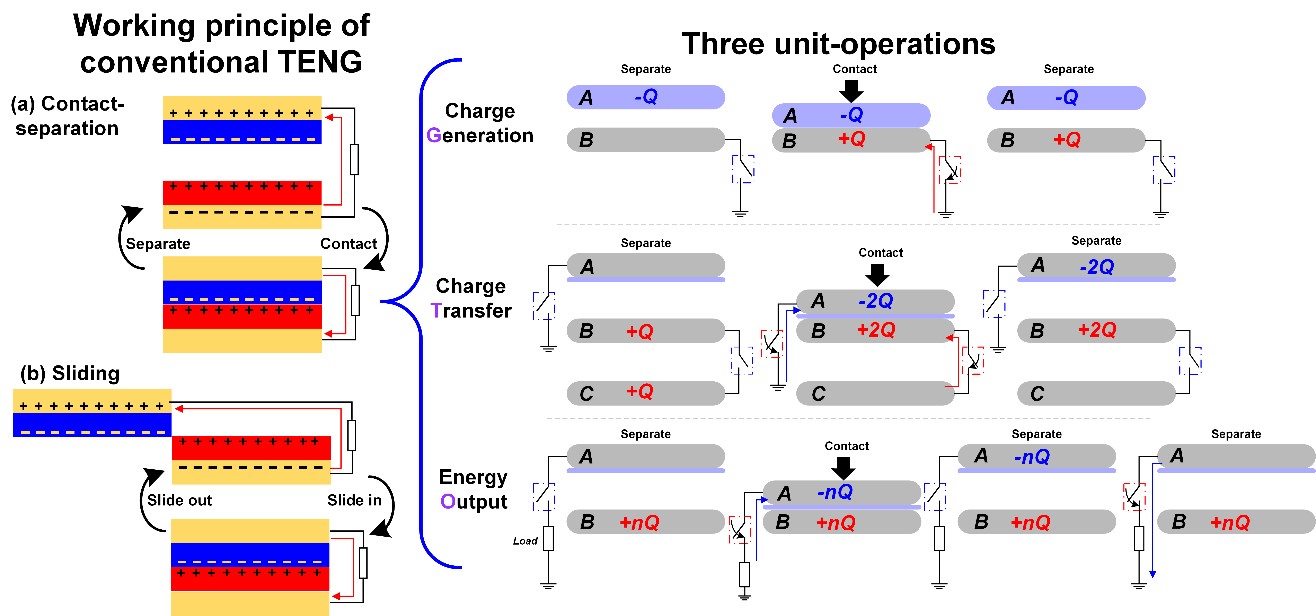Researchers Propose New Multi-Switch Regulation Methodology for Energy Manipulation
Date:28-09-2020 | 【Print】 【close】
A triboelectric nanogenerator (TENG) is a self-powered, feasible solution to convert mechanical energy into electricity and specifically satisfy the increasing demand of the internet of things (IoTs), which has been widely applied for various self-powered sensors and is considered as the most promising energy source for the sensor nodes in IoTs.
In order to achieve higher output, previous researches have two main directions: enhance the surface charge density by selecting better materials and enhance the efficiency by optimizing the device structures.
However, in the perspective of IoTs, the portable/wearable feature of the sensor nodes exerts strong constraints on the dimension and the complexity of TENG devices. Therefore, exploring an alternative approach beyond the material and structure optimization is highly desired.
Recently, Dr. WANG Hao from the Shenzhen Institutes of Advanced Technology (SIAT) of the Chinese Academy of Sciences proposed an alternative approach: writing a program for TENG, which is fundamentally different from conventional one.
The operation principle of the conventional TENG device involves three basic physical procedures (also called unit operations) named: charge generation by friction, charge transfer by capacitance change, and power output on the external load. The operation principle of it is a loop of a specific combination and sequence of three unit-operations, which is considered as the most basic program.
Based on this principle, Dr. WANG's team forwarded the creative idea of writing a program for the three unit-operations, which can be programmed with a more complex combination and sequence, and enables a charge accumulation on one of the electrode plate. The energy can increase with the operation loops and saturates at a certain point when the internal voltage researches the threshold of capacitive breakdown.
Compared with the conventional TENG, the programmable TENG is fundamentally different in three aspects.
First, the maximum voltage/output was not determined by the materials of the friction surfaces. The surface charge density on the friction surface only affects the duration required to reach the maximum output. In other words, all kinds of non-conductive materials could be used for the friction surfaces. This advantage could significantly broaden the range of material selection.
Second, the maximum output was limited by the capacitive breakdown voltage between electrode plates. In terms of material selection, the team needed high-K materials to achieve higher capacitive breakdown voltage to enhance the energy output further.
Third, there were an infinite number of feasible programs for charge accumulation. Each program required a specific mechanical structure for its physical realization.
This study demonstrated three programs, which were realized by one-directional sliding, back and forth sliding, and rotation, to achieve high voltages as 1.5 kV~1.8 kV. Therefore, designing the program and physical structure to fit the application scenarios is an alternative research direction for the study of TENG.
The study was published in Nano Energy.

Figure 1. The working principle of the conventional TENG and the three unit-operations. (Image by SIAT)

Figure 2. The program of charge oscillator is physically realized by a rotating device and achieves the output voltage, which increases with operation loops. (Image by SIAT)
Media Contact:
ZHANG Xiaomin
Email: xm.zhang@siat.ac.cn